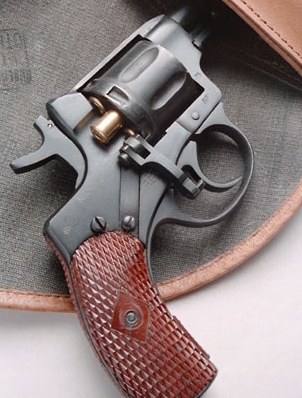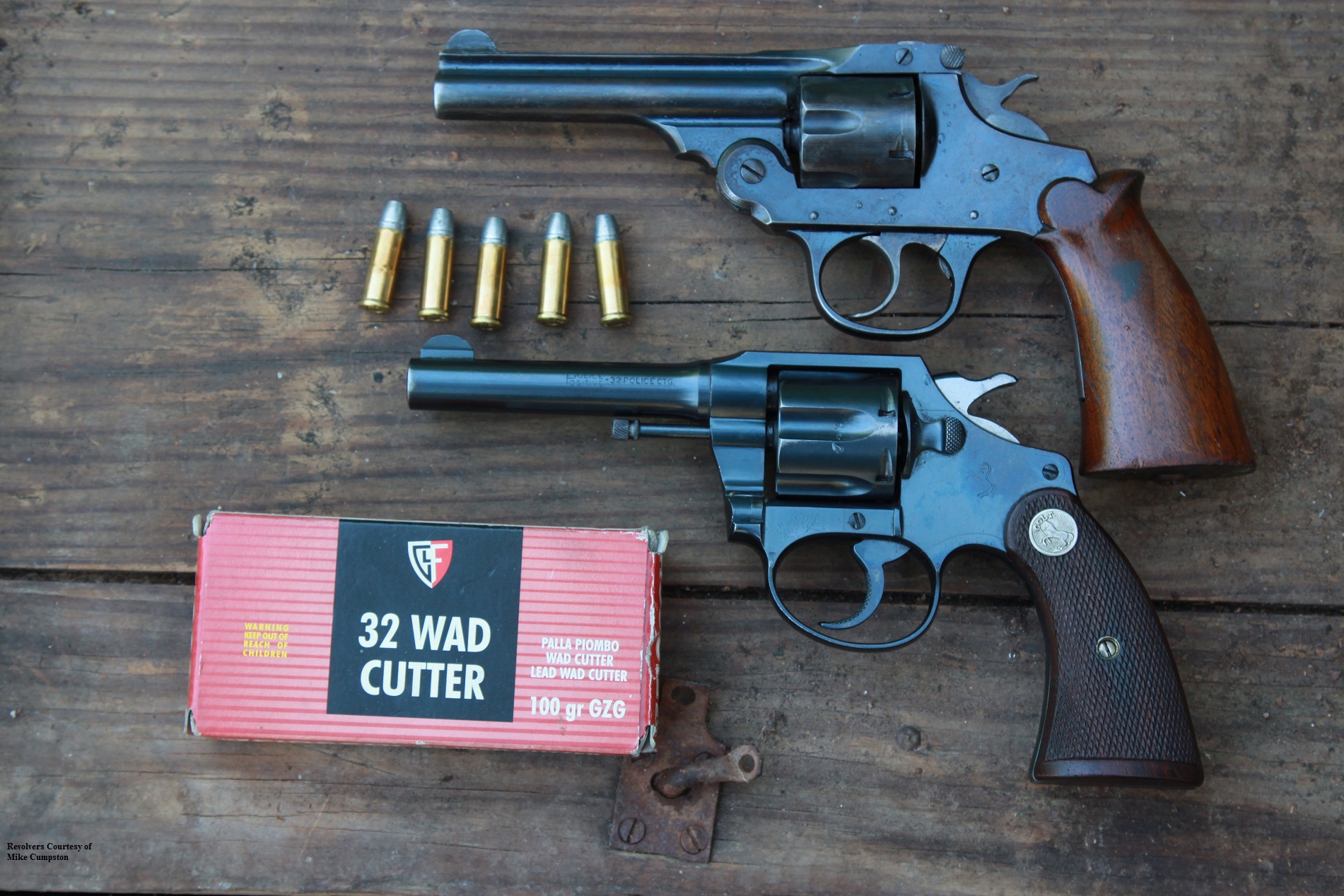|
7.62×38mmR
7.62×38mmR (also known as 7.62 mm Nagant and Cartridge, Type R) is an ammunition cartridge designed for use in the Russian Nagant M1895 revolver. A small number of experimental submachine guns (e.g., Tokarev 1927), designed by Fedor Tokarev, were also produced in a 7.62 mm Nagant chambering. None, however, were accepted into Soviet service. Background The projectile is seated below the mouth of the cartridge, with the cartridge crimp sitting just above the bullet. When fired in the Nagant revolver, the crimp expands into the forcing cone, completing the gas seal and ostensibly increasing muzzle velocity by approximately 23 m/s (75 ft/s). Commercially manufactured and loaded 7.62×38R cartridges are no longer difficult to find. Most commercially loaded ammunition for the Nagant, including Fiocchi and the "СССР"-marked yellow box imports, are target ammunition, and do not have great stopping power. The low power of these rounds has given the Nagant a rep ... [...More Info...] [...Related Items...] OR: [Wikipedia] [Google] [Baidu] |
Nagant M1895
The Nagant M1895 Revolver is a seven-shot, gas-seal revolver designed and produced by Belgian industrialist Léon Nagant for the Russian Empire. The Nagant M1895 was chambered for a proprietary cartridge, 7.62×38mmR, and featured an unusual "gas-seal" system, in which the cylinder moved forward when the gun was cocked, to close the gap between the cylinder and the barrel, providing a boost to the muzzle velocity of the bullet and allowing the weapon to be suppressed (an unusual characteristic for a revolver). In fact, a 38mm long shell covers the whole bullet for this very purpose as well. This way, early Nagant users would avoid dealing with gases of black powder. Its design would inspire the Pieper M1893 carbine and Steyr 1893 revolver. Russian M1895 Léon Nagant and his brother Émile were well known in the Russian Tsar's court and military administration because of the part they had played in the design of the Russian service rifle, the Mosin–Nagant Model 1891. The Nag ... [...More Info...] [...Related Items...] OR: [Wikipedia] [Google] [Baidu] |
Tokarev 1927
The Tokarev Model 1927 submachine gun was an experimental firearm developed in the Soviet Union under the leadership of Fedor Vasilievich Tokarev as part of the Soviet Union's drive to be self sufficient in armaments. It was a blowback-operated, two trigger weapon which fired a 7.62mm round originally intended as a revolver round. Before it could go into production other manufacturers produced their own submachine guns. In competitive trials a weapon designed by Degtyarev proved superior and further development of the Tokarev was halted. Origin Owing to supply problems, in 1924 the Soviet leadership decided to abandon all weapons using foreign ammunition. As a consequence, production of the Fedorov Avtomat was halted in 1925 and was withdrawn from service by 1928. In 1925 the Soviet Army commission for weapons decided that submachineguns should be introduced into army service, initially as offensive weapons for low-ranking officers. Consequently, a contest was started the followi ... [...More Info...] [...Related Items...] OR: [Wikipedia] [Google] [Baidu] |
32 S&W Long
The .32 S&W Long, also known as 7.65x23mm, is a straight-walled, centerfire, rimmed handgun cartridge, based on the earlier .32 S&W cartridge. It was introduced in 1896 for Smith & Wesson's first-model Hand Ejector revolver. Colt called it the .32 Colt New Police in revolvers it made chambered for the cartridge. History The .32 S&W Long was introduced in 1896 with the company's first hand ejector revolver. The .32 Long is simply a lengthened version of the earlier .32 S&W. The hand ejector design has evolved some, but with its swing out cylinder on a crane, has been the basis for every S&W revolver designed since. In 1896, the cartridge was loaded with black powder. In 1903 the small hand ejector was updated with a new design. The cartridge stayed the same, but was now loaded with smokeless powder to roughly the same chamber pressure. When he was the New York City Police Commissioner, Theodore Roosevelt standardized the department's use of the Colt New Police revolver. The car ... [...More Info...] [...Related Items...] OR: [Wikipedia] [Google] [Baidu] |
32 H&R Magnum
The .32 H&R Magnum is a rimmed cartridge designed for use in revolvers. It was developed and introduced in 1984 as a joint venture between Harrington & Richardson and Federal Premium Ammunition. The .32 H&R Magnum is produced by lengthening the .32 S&W Long case by .155", to 1.075". Performance The .32 H&R Magnum offers substantially more performance than most other .32 caliber handgun cartridges, such as the .32 ACP, and is considered an effective small-game hunting cartridge. Its higher velocity offers a flat trajectory, while the light weight of the bullet results in low recoil. The older .32-20 Winchester was extremely popular in the Winchester lever- and Colt single-actions, available at the turn of the century, for small-to-medium game hunting. The .32 H&R offers near duplicate performance. Maximum pressure for the .32 H&R Magnum is set at 21,000 CUP by SAAMI. The .327 Federal Magnum is based on a lengthened .32 H&R Magnum cartridge case and this increases the perfo ... [...More Info...] [...Related Items...] OR: [Wikipedia] [Google] [Baidu] |

